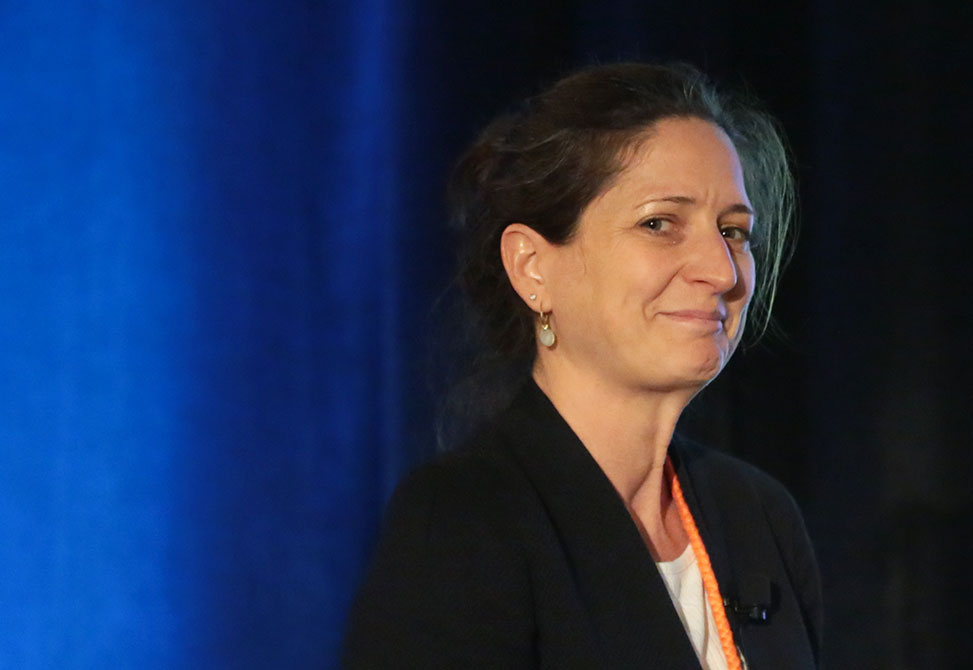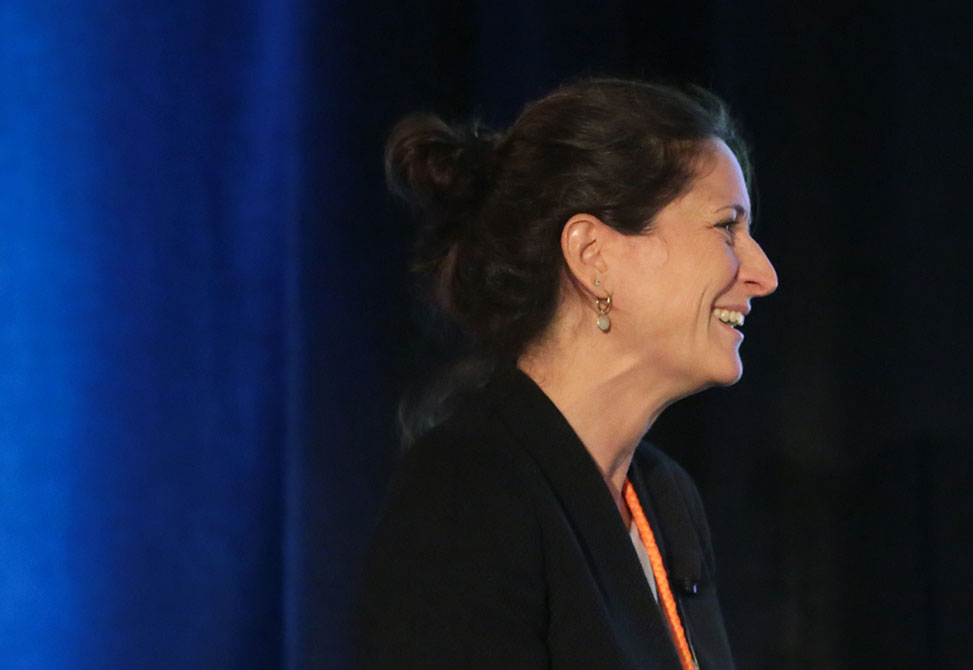Ines Neundorf
University of Cologne
Talk Title
Peptides Interfering With TANGO1 Reduce Collagen Secretion and Prevent Skin Fibrosis
Presentation Time
SESSION 8: NATURAL PRODUCT BIOSYNTHESIS & INSPIRATION FROM NATURE
Tuesday, June 27, 2023, at 12:30 pm - 12:50 pm
Collagen is the most abundant protein in mammals and not surprisingly, dysregulated collagen homeostasis is related to different pathologic conditions. Extensive fibrosis is characterized by the overproduction of collagen and a feature of systemic sclerosis which can affect most organs. Since first symptoms are usually observed in the skin, and due to the accessibility of skin samples, it displays a useful model system for fibrosis.
Despite many efforts to characterize fibrosis, the underlying disease mechanisms are still only poorly understood. Proteins that play essential roles in collagen secretion belong to the TANGO1 family. TANGO1 is a transmembrane protein that is resident at the ER exit site, ERES. The ER luminal part recruits collagen to the ERES, while cytoplasmic regions specifically interact with its paralog cTAGE5 initiating the formation of transient inter-organelle tunnels to increase the secretory capacity for collagen.
To control and regulate collagen secretion we have developed membrane-permeant peptides that act as competitive inhibitors of TANGO1/cTAGE5 function. These peptide inhibitors are composed of regions of TANGO1 and cTAGE5 domains, conjugated to cell-penetrating peptides. We demonstrate that they are active in various systems including zebrafish and display therapeutic efficacy in primary fibroblasts from scleroderma patients. Our results let conclude that precise targeting of ERES proteins makes it possible to specifically control ER export. Moreover, this innovative approach might be a promising avenue for therapeutic intervention for currently intractable fibrotic disorders.
References
Annika Klimpel, Katharina Stillger, Janica L Wiederstein, Marcus Krüger, Ines Neundorf. Cell-Permeable CaaX-Peptides Affect K-Ras Downstream Signaling and Promote Cell Death in Cancer Cells. FEBS J. 2021 May;288(9):2911-2929.
Thomas Krieg and Monique Aumailley. The Extracellular Matrix of the Dermis: Flexible Structures with Dynamic Functions. Experimental Dermatology, 2011 20(8), pp. 689–695.
Kota Saito, Mei Chen, Fred Bard, Shenghong Chen, Huilin Zhou, David Woodley, Roman Polischuk, Randy Schekman, and Vivek Malhotra. TANGO1 Facilitates Cargo Loading at Endoplasmic Reticulum Exit Sites. Cell, 2009 136(5), pp. 891–902.
Raote, I. and Malhotra, V. Tunnels for Protein Export from the Endoplasmic Reticulum. Annual Review of Biochemistry, 2021, 90, pp. 605–630.
Research in the Neundorf Group focuses on the synthesis, modification and biological evaluation of peptides. Particularly we study membrane active peptides, like cell-penetrating peptides, antimicrobial peptides, and lytic peptides exhibiting anticancer activity; additionally, peptides that inhibit protein-protein interactions have gained our interest. Moreover, we tune peptides by chemical methods to increase their stability in in vivo systems and to modulate their selectively for for example, distinct cell types or intracellular organelles.
We combine solid phase peptide chemistry with solution phase organic chemistry methods. Usually, the novel peptides are tested in live cells by fluorescence methods, or, in collaboration, by using radiometal-labeled peptides. Furthermore, we perform peptide-lipid interaction studies using artificial membrane vesicles or plasma membrane vesicles.
Recent achievements included the design of novel CPPs with potential anticancer activity, as well as the development of promising antimicrobial peptide conjugates.






